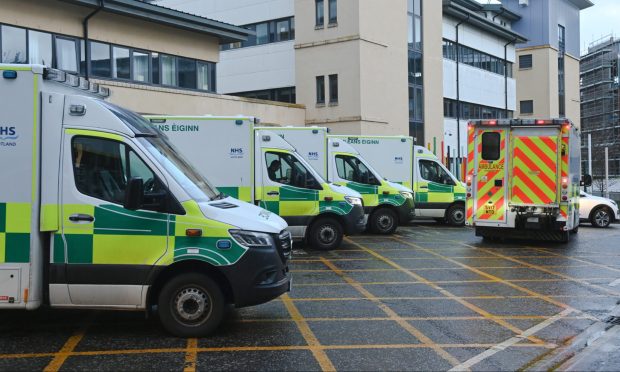New SNP health chief Neil Gray was given the biggest job of his career so far last week as Humza Yousaf tasked him to run Scotland’s NHS.
But from record A&E waiting times to lengthy delays getting patients out of hospitals, the Airdrie and Shotts MSP will have plenty on his plate.
Here’s the current state of play as the SNP’s sixth health secretary in the past decade looks to get the NHS back on track.
Waiting times remain a major problem
No problem has gripped Scotland’s NHS since the Covid pandemic more than plummeting waiting times for A&E patients.
There was a major decline in the number of people showing for emergency treatment during Covid lockdowns when everyone was told to stay home.
But that quickly reversed as pandemic restrictions were eased as the NHS continued struggling to recover from the impact of the virus.
In December 2022 – when First Minister Humza Yousaf was health secretary – just over 62% of all patients were seen within the target time of four hours.
That led to repeated demands for Nicola Sturgeon to sack him, before he ended up replacing her in the top job instead.
A year on, just over 65% of patients were able to get treatment without waiting for more than four hours, a slight improvement.
Mr Gray succeeds outgoing health chief Michael Matheson during the winter period when emergency departments remain under immense pressure.
Waiting times in NHS Grampian hospitals have plummeted since the pandemic.
In December last year, just 64% of patients were seen within the target time, just slightly below the national average.
By comparison, that figure was 93.5% five years earlier in 2018, when A&E departments were meeting the 95% target much more often.
NHS Highland has been one of the country’s better performing areas and has been less impacted by the national decline since Covid.
In December, 82.7% of patients were seen within the four-hour target time, far higher than the Scotland-wide average but a record low for the health board.
Meanwhile, the country’s three island health boards – Orkney, Shetland and the Western Isles – have also coped well compared to mainland hospitals.
Bed blocking has risen since the pandemic
Delayed discharge for patients from hospitals across Scotland is another crisis that has plagued successive health ministers in the aftermath of Covid.
In December 2023, 1,879 Scots on average were being kept in hospital for longer than they ideally needed to be every single day.
That’s just slightly below a total of 1,950 beds being blocked every 24 hours in November 2022, the highest figure in the past five years.
NHS Highland has seen a significant rise in delayed discharges since the pandemic.
In December, 217 patients were being kept in hospital beds for longer than they needed to be there each day, the highest monthly total so far.
No total between January 2018 and March 2020, when lockdown rules were first put in place, even comes close to that.
By contrast, NHS Grampian has fared much better and has not seen a significant rise in delayed discharges over the past half-decade.
In the final month of last year 133 beds were blocked on average every day, a small increase compared to 124 exactly five years earlier.
What other problems will the new health secretary face?
Getting A&E times and delayed discharge down will be just two of the many problems Mr Gray has to tackle across the north and north-east.
The NHS has been plagued with long-running recruitment difficulties in many of Scotland’s more rural areas.
Ambulance queues outside Aberdeen’s Royal Infirmary were a major concern in December when more than a dozen were stacked outside the building.
One patient in the city was forced to wait for more than 15 hours before they could even get an ambulance.
And Mr Gray also comes into the challenging new job at a time when cash is stretched due to widespread budget cuts.
Last month, his predecessor Mr Matheson admitted there was no cash for two over-budget and delayed Aberdeen hospitals.
He will also be expected to address longstanding worries over depleted maternity services in Moray.


